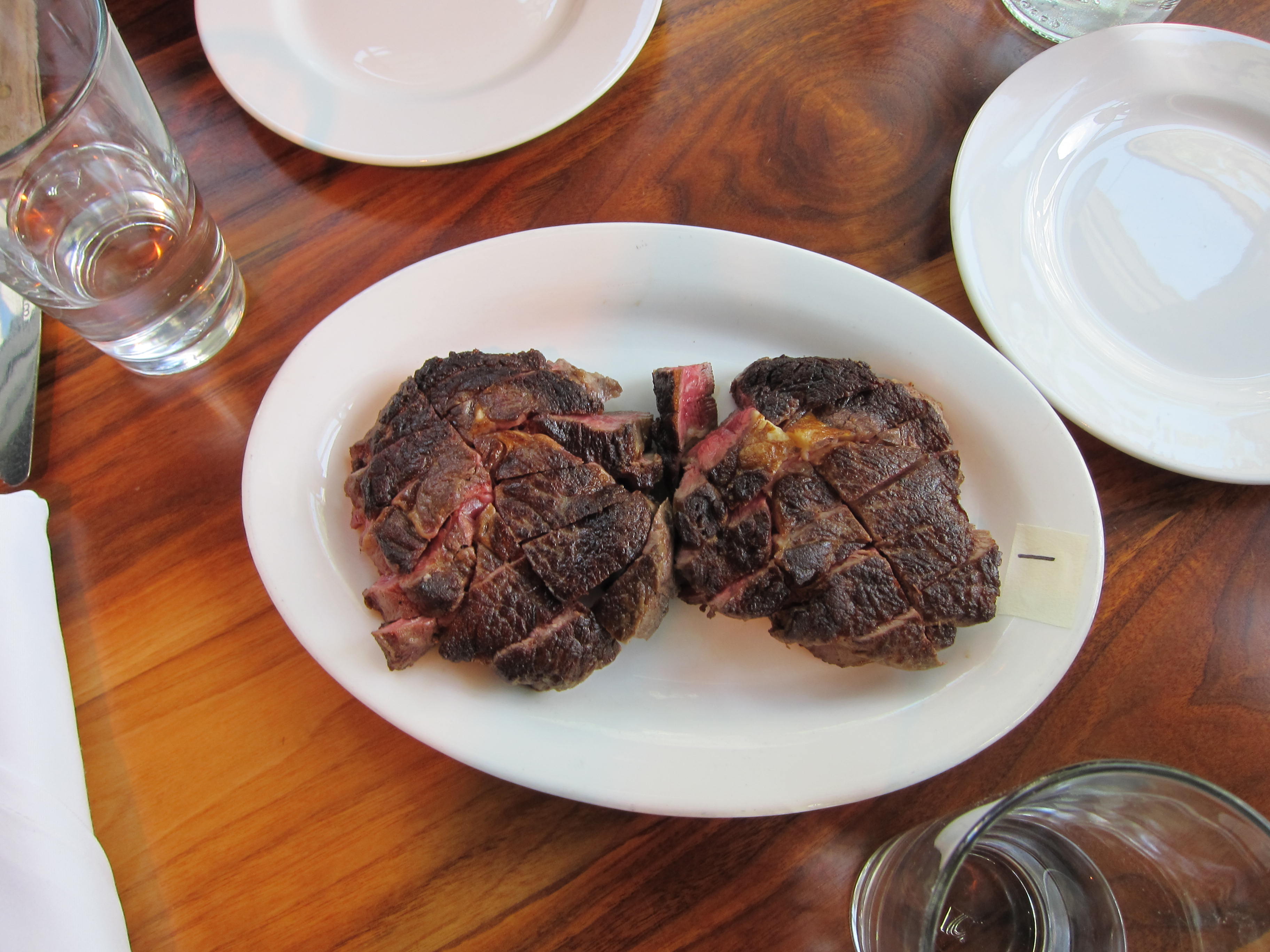Grain-fed vs. Grass-fed: The Debate Gets Put to the Test at Area Four
 Is the grass (fed) always greener? Photo by Alyssa DeGeorge
Is the grass (fed) always greener? Photo by Alyssa DeGeorge
As we become more and more aware of the ingredients and practices that go into what we eat, it can be a challenge to sort through what actually matters. As the chair of national sustainability-minded group Chefs Collaborative, Lumière and Area Four chef/owner Michael Leviton is committed to serving high-quality beef from farms that he thinks do things right. As a result, he’s a staunch supporter of the grass-fed cattle movement, stating that it means a better life for the animal and healthier, tastier meat for the consumer.
In order to prove his thesis, Leviton hosted a blind tasting at Area Four yesterday, and we came along to get schooled. Leviton served eight samples of unseasoned steak: two cuts each of beef (ribeye and bavette) with four different backgrounds for each (grass-fed for three years, grass-fed for two years, hormone-and-antibiotic-free grain-fed, and corn-based commodity beef). It was the guests’ job to choose their favorite and attempt to identify the back-story of the beef.
The ribeye came first and there was a distinct difference in the flavor, chewiness, color and texture of each sample. It was decidedly more difficult to distinguish between each variety in the bavette sampling that followed. Overall, the two-year grass-fed meat was the favorite of the afternoon, but tasters had a variety of mixed opinions.
Even with disagreement, Leviton was successful in spurring discussion about grass-fed beef. “It’s important for people to be able to understand the difference,” he said. Ahead, here was our takeaway from the event.—Alyssa DeGeorge
Leviton doesn’t really care how the steaks stacked up according to the tasters.
The panel’s favorite was the two-year, grass-fed beef, but feelings were mixed on the rest. Some pinned the commodity sample as one of their favorites. Some guessed the grain-fed, “never had it, never will” beef was one of the grass-fed samplings. But Leviton knows what he likes and plans to keep serving the grass-fed beef that he prizes. To him, the flavor is important, but health and environmental factors also play a role. “Regardless of what the panel says, I will continue to do what I think is right,” he said.
It’s only natural that grass-fed beef is better for you.
“Cows – they’re basically lawnmowers with feet,” Leviton said. “They’re not meant to eat corn in the way that we’ve industrialized the process.” According to the American Grassfed Association’s website, grass-fed products are lower in fat, cholesterol, and calories, and contain higher amounts of vitamin A, linoleic acid, and Omega-3 fatty acids, which help to reduce cholesterol, diabetes, high blood pressure, and cancer.
More natural means more variety.
Grain and corn help to standardize the taste of the meat, so purely grass-fed animals will have more variation – even if they’re from the same farm. Effects of the changing seasons or different climates can alter the way the beef tastes. ”You’re getting a more pure expression of a particular animal at a particular farm in a particular climate,” Leviton said. Because of the nature of the meat, it also needs to be treated gentler when cooked and it needs to be cooked less. “The big misconception about grass-fed is ‘Oh, it’s tough,’ and it really doesn’t need to be,” Leviton said. So if you didn’t like grass-fed beef the first time, give it another try.
Don’t expect to find grass-fed beef in the typical grocery store.
Unfortunately, it would be extremely challenging for grass-fed beef to be produced at a large enough scale to replace the beef we buy at grocery stores today. Raising grass-fed cattle is a longer process, so the price of the meat is two to three times that of the commodity, said Leviton. Accessibility is increasing, though. Leviton said that grass-fed beef is available at some Whole Foods outposts, and one of the farms he works with just signed a contract with Chipotle.
Grain-fed beef can be good beef.
Leviton recognizes that he’s lucky to have access to the grass-fed beef he gets for his restaurants. If you don’t, go for the grain-fed “never had it, never will” hormone-and-antibiotic-free alternative. He says this is an excellent large-scale option that is available at most supermarkets. These farms treat their animals well, and with the promise of no hormones and no antibiotics, they’re healthier than commodity beef.
Eat local.
The distance from the farm to the table will always play an important role in the healthiness, quality and price of the meat you’re eating. “The closer you are to that farm, the healthier you’re going to be,” Leviton said.
For more online food coverage, find us on Twitter at @ChowderBoston


